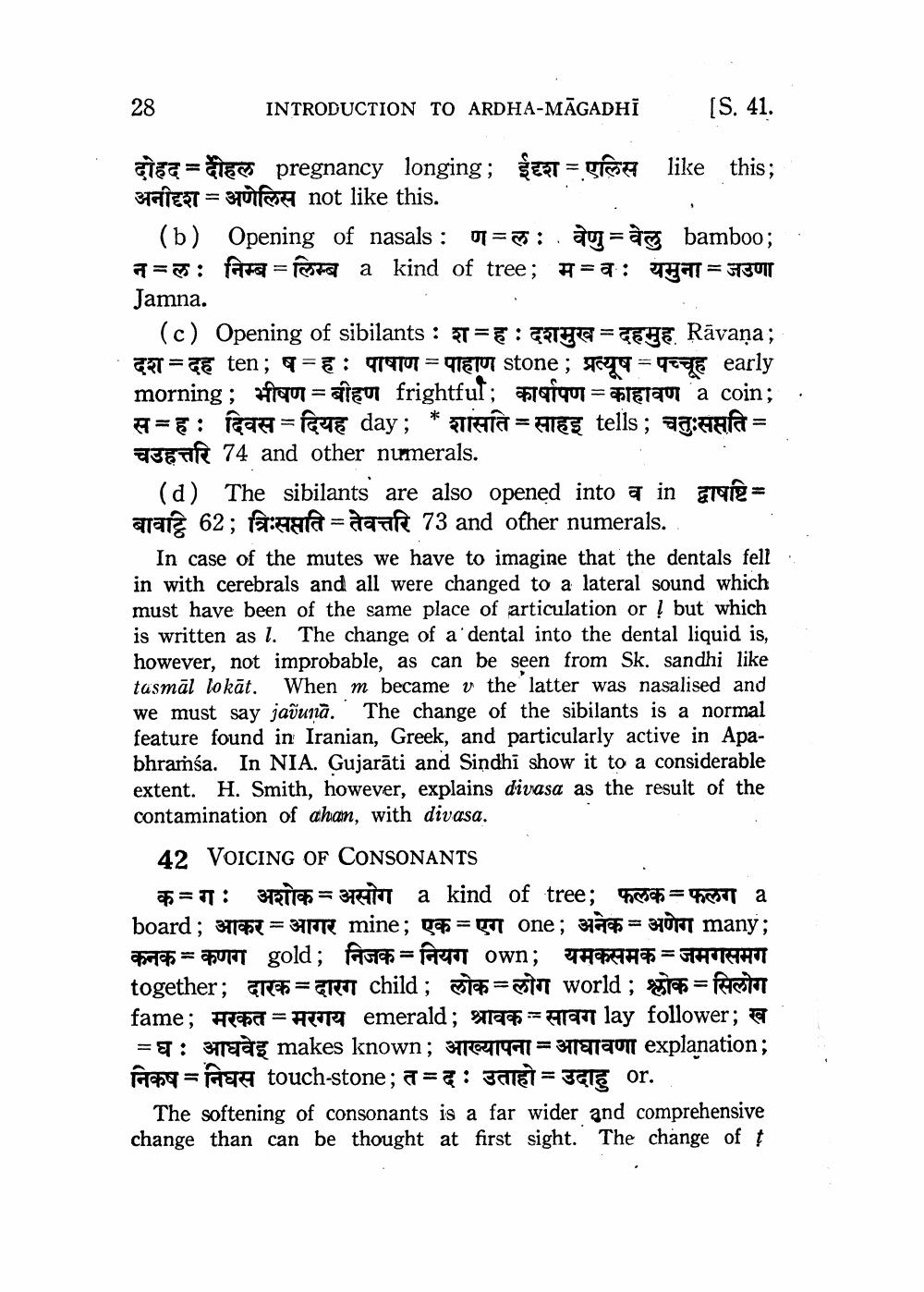________________
28
INTRODUCTION TO ARDHA-MĀGADHI
[S. 41.
दोहद = दोहल pregnancy longing; ईदृश = एलिस like this; अनीश = अणेलिस not like this.
(b) Opening of nasals : ण =ल : . वेणु = वेलु bamboo; न = ल : निम्ब = लिम्ब a kind of tree; मव: यमुना = जउणा Jamna.
(c) Opening of sibilants : श=ह : दशमुख = दहमुह. Ravana; दश=दह ten; ष-ह: पाषाण = पाहाण stone; प्रत्यूष = पच्चूह early
morning; भीषण =बीहण frightful; कार्षापण = काहावण a coin; . सह : दिवस-दियह day; * शासति साहइ tells ; चतुःसप्तति = चउहत्तरि 74 and other numerals.
(d) The sibilants are also opened into व in द्वाषष्टि % बावहि 62 ; त्रिसप्तति = तेवत्तरि 73 and other numerals.
In case of the mutes we have to imagine that the dentals fell in with cerebrals and all were changed to a lateral sound which must have been of the same place of articulation or ! but which is written asl. The change of a dental into the dental liquid is, however, not improbable, as can be seen from Sk. sandhi like tasmāl lokāt. When m became v the latter was nasalised and we must say jaõunā. The change of the sibilants is a normal feature found in Iranian, Greek, and particularly active in Apabhraṁsa. In NIA. Gujarāti and Sindhi show it to a considerable extent. H. Smith, however, explains divasa as the result of the contamination of ahan, with divasa.
42 VOICING OF CONSONANTS कग: अशोक = असोग a kind of tree; फलक = फलग a board; आकर = आगर mine; एक = एग one; अनेक = अणेग many; कनक = कणग gold; निजक= नियग own; यमकसमक =जमगसमग together; दारक = दारग child; लोक-लोग world ; श्लोक = सिलोग fame; मरकत = मरगय emerald; श्रावक-सावग lay follower; ख
=घ : आघवेइ makes known; आख्यापना= आघावणा explanation; निकष = निघस touch-stone ; त =द : उताहो = उदाहु or..
The softening of consonants is a far wider and comprehensive change than can be thought at first sight. The change of t




